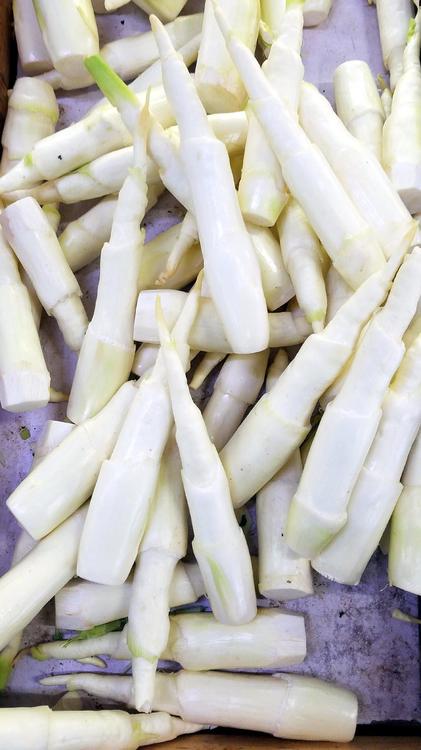Zizania latiflora
I’m not sure what to call this in English. A number of resources label it as “Manchurian wild rice”, but Manchuria as a name is anathema to most Chinese as it refers to the puppet state set up by the Japanese invaders in the 1930s. The area is known to the Chinese as 东北 (literally “east-north”), so I’m going with Dongbei Wild Rice Stems.
In Chinese, they go by many names, but the most common seems to be 茭笋/茭筍 (Mand: jiāo sǔn) , 茭白 (Mand: jiāo bái;) 茭白笋/茭白筍 (Mand: jiāo bái sǔn). I have been unable to find the Cantonese name in any of my dictionaries. Maybe they don't know about it.
Peeled, they look a lot like bamboo shoots and have been called “water bamboo” in older English texts, but are totally unrelated to bamboo – despite the Chinese name including 笋/筍, which usually refers to bamboo shoots. Many Chinese people think they are bamboo, too.
They are the stems of a wild rice plant once an important grain in China. Today the plant is virtually extinct in the wild and the grain is no longer eaten, but the stems are still cultivated as a vegetable.
The stems are infected by a fungus, Ustilago esculenta, which causes them to swell into juicy tubers. These are peeled, sliced and usually stir fried, although it can be eaten raw. The vegetable retains a certain crispness when stir fried, a desirable quality in Chinese cuisine.
The importation of the stems to the USA is illegal as there are fears the fungus would spread to native wild rice varieties. It is classified as an invasive species in New Zealand.




